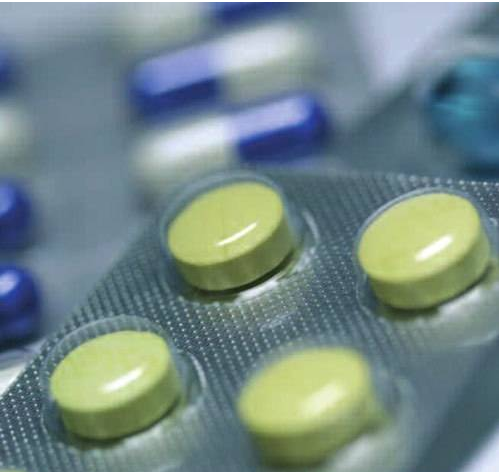The development trend of world pharmaceutical packaging in the next ten years
- Categories:Aluminum Foil News
- Author:
- Origin:
- Time of issue:2021-06-19
- Views:1049
(Summary description)The pressure comes from new end users, legislation and regulations, and increasing competition in the pharmaceutical industry.
The development trend of world pharmaceutical packaging in the next ten years
(Summary description)The pressure comes from new end users, legislation and regulations, and increasing competition in the pharmaceutical industry.
- Categories:Aluminum Foil News
- Author:
- Origin:
- Time of issue:2021-06-19
- Views:1049
The pressure comes from new end users, legislation and regulations, and increasing competition in the pharmaceutical industry. In the next ten years, as pharmaceutical companies begin to produce drugs for a small group of people, packaging companies will have to take corresponding measures, such as providing a small number of highly specialized packaging systems. Declining population, changes in medical care payment methods, financial and product adjustment trends will also have an uninterrupted impact on packaging in the next ten years.
Experts predict that only those packaging industry innovators who introduce new packaging platforms and strive to meet the needs of these trends can become market leaders. However, small companies will benefit from the emergence of biological products and personalized medicines, and they will also usher in brand new market opportunities. If they can seize the opportunities, small companies have a lot to do.
Multiple factors influence
An increasing number of elderly people will have an important impact on the packaging of future medicines. Loss of exercise capacity, decreased muscle strength, and weakened eyesight, this series of decline in human body function and aging will directly affect the design and manufacture of pharmaceutical packaging. The memory of the elderly declines, but they have to take a lot of drugs every day, which is an important factor that causes medication errors. Packaging design also needs to consider these conditions. While meeting the expanding elderly market, the pharmaceutical packaging industry must also meet the demands of children. Packaging must play an important role in preventing medication errors and improving adaptability. The packaging industry is under increasing pressure from both the government and private stakeholders, who are demanding improved packaging to reduce medication errors.
In November 2000, the U.S. Food and Drug Administration (FDA) proposed a new format for prescription drug labeling. On April 18, 2001, the U.S. Department of Labor and the U.S. Occupational Safety and Health Administration (OSHA) revised the control standards for blood infectious disease sources and set more requirements for the selection of safe needle equipment. In June 2001, NCCMERP (National Coordinating Committee for Medication Malpractice Notification and Prevention) recommended the use of standard barcodes on drugs to reduce errors and improve patient care. In just two years, a series of laws and regulations have all put forward new requirements on drug packaging. The interaction between biopharmaceuticals and packaging is more obvious. With the increase in the number of biological medicines and internationally coordinated regulations will lead countries to require higher standards for biological medicines, the adjustment and review of the packaging of biological medicines in various countries is also increasing. In short, the new regulations require safer drug products, drug packaging to protect children, and stricter packaging policies. These requirements, as well as more complex drugs, such as the packaging of biological drugs, require packagers to provide products while maintaining low prices. Innovative product solutions.
The future business opportunities are unlimited. At present, the world-wide pharmaceutical packaging industry with a scale of 15 billion US dollars has shown a historically low growth. However, in the next decade, changes in the types of medicines and the packaging requirements they bring provide new opportunities for the expansion of the packaging market, including: container components and coatings made of new materials, improving adaptability and reducing medication errors Packaging systems (such as blister packaging), overall solutions for biopharmaceutical packaging, combined diagnostics/drug packaging, etc. In this decade, there will be more global packaging companies that can not only provide low-cost packaging services globally, but also meet the packaging needs of future biopharmaceuticals.

There are several ways to expand the packaging market in the next ten years. Companies that are expected to expand their market share should have the following characteristics:
●Provide comprehensive commercial services including biopharmaceutical packaging. These companies will benefit from the rapid growth of these pharmaceutical products.
●Adopt packaging innovation to meet new packaging requirements while maintaining the current price level.
●Become a global packaging company like those customers of global pharmaceutical companies. These companies are most capable of taking effective and efficient response measures based on customer requirements on a global scale.
●For the newly emerging personalized medicine market, develop cost-effective packaging services that can be applied to different regions of the world.
●Retain big customers. The reorganization of competition in the pharmaceutical industry has reduced the total number of customers, but the importance of large customers has therefore increased.
Scan the QR code to read on your phone
Real-time News

Online Message
Ask about our products and prices, please leave your email, and we will contact you within 24 hours.


Sweep, mobile station

Electronic business card
Address
Daqiao Industrial Park, Jiangdu, Yangzhou,China
Copyright:Yangzhou Jerel Pharmaceutical New Material Co., Ltd. Powered by www.300.cn 苏ICP备13054439号-1

